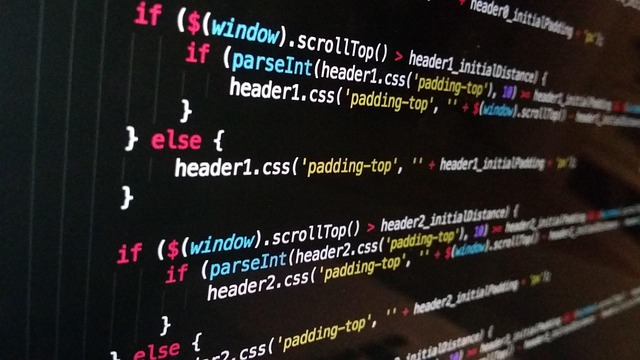Understanding Website Design for Beginners
Website design is the process of planning and creating the look and feel of a website. It includes choosing colors, fonts, images, and layout so visitors can find information easily. Learning the basics of website design helps anyone build clear and attractive pages that are easy to use and enjoyable to explore.

Website design is the process of creating and building websites, encompassing various elements from visual appearance to technical functionality. For beginners, understanding the foundations of website design opens doors to creating an online presence, whether for personal projects, small businesses, or professional development. While the field might initially seem complex, approaching it step by step makes it accessible to anyone willing to learn.
Essential Website Design Principles for Beginners
Successful website design relies on fundamental principles that guide both aesthetics and functionality. Balance creates visual stability across your page, ensuring elements don’t feel lopsided. Contrast helps distinguish important elements from others, making content more readable and navigable. Unity ensures all design elements work together cohesively rather than competing for attention. Hierarchy directs visitors’ eyes to the most important information first, typically through size, color, or positioning differences. For beginners, focusing on simplicity often yields better results than attempting complex designs—clean layouts with adequate white space create breathing room for content and reduce visual overwhelm for visitors.
Getting Started with Basic Web Page Layout
The foundation of any website begins with understanding page layout structures. Most websites follow consistent patterns that visitors intuitively understand. The header typically contains your logo and main navigation menu. The body houses your primary content, often divided into sections or columns. A sidebar might offer secondary information or additional navigation options. The footer generally includes contact information, copyright notices, and supplementary links. When planning your first layout, consider sketching your ideas on paper before moving to digital tools. This wireframing process helps visualize how elements will fit together and creates a blueprint for development. Standard layouts like single-column, two-column, or grid-based designs offer proven starting points for beginners to adapt to their specific needs.
Learning Website Design Tools and Resources
The right tools can significantly streamline the website design process for beginners. Content management systems (CMS) like WordPress, Wix, or Squarespace offer user-friendly interfaces with drag-and-drop functionality, eliminating the need for extensive coding knowledge. For those interested in more customization, visual design tools such as Adobe XD, Figma, or Sketch help create mockups before implementation. When ready to dive deeper, learning basic HTML and CSS through free resources like W3Schools, MDN Web Docs, or Codecademy provides valuable foundational knowledge. Online communities including Stack Overflow, GitHub, and Reddit’s web design forums offer support when challenges arise. Many beginners benefit from video tutorials on platforms like YouTube, where step-by-step guidance walks through common design processes and problem-solving techniques.
Understanding Technical Requirements
Even basic website projects require certain technical foundations to function properly. Domain names serve as your website’s address on the internet, requiring annual registration through providers like GoDaddy, Namecheap, or Google Domains. Web hosting provides server space where your website files live, with options ranging from shared hosting (most economical) to dedicated servers (for high-traffic sites). File types commonly used in web design include HTML (structure), CSS (styling), JavaScript (interactivity), and various image formats like JPEG, PNG, and SVG. Understanding responsive design principles ensures your website displays correctly across devices of different screen sizes—an essential consideration with mobile browsing now exceeding desktop usage. While beginners don’t need to master every technical aspect immediately, familiarity with these concepts provides context for design decisions and troubleshooting.
Implementing User Experience Best Practices
User experience (UX) focuses on how people interact with your website and how it makes them feel. Navigation should be intuitive, allowing visitors to find information within three clicks. Page load speed significantly impacts user satisfaction and search engine rankings—optimize images and minimize unnecessary scripts to improve performance. Readability depends on appropriate font choices, adequate contrast between text and background, and comfortable line spacing. Call-to-action elements should stand out visually while clearly communicating their purpose. Accessibility considerations ensure your website works for all users, including those with disabilities—proper heading structures, alt text for images, and keyboard navigation support are essential starting points. Testing your design with actual users provides invaluable feedback before finalizing your website, revealing pain points you might have overlooked.
Website Design Cost Considerations
Website design costs vary significantly based on complexity, customization needs, and whether you build it yourself or hire professionals. Understanding typical price ranges helps beginners plan appropriately for their projects.
| Approach | Typical Cost Range | Best For | Features |
|---|---|---|---|
| DIY Website Builders | $0-30/month | Personal sites, small businesses | Templates, drag-and-drop editors, limited customization |
| WordPress with Premium Theme | $60-300 initial + $10-30/month hosting | Small to medium businesses | Greater customization, plugin ecosystem, scalability |
| Freelance Designer | $500-5,000 | Established small businesses | Custom design, professional implementation, limited support |
| Design Agency | $3,000-30,000+ | Medium to large businesses | Full custom design, strategy, ongoing support |
Prices, rates, or cost estimates mentioned in this article are based on the latest available information but may change over time. Independent research is advised before making financial decisions.
Beyond initial design costs, consider ongoing expenses such as domain renewal ($10-20/year), hosting ($5-300/month depending on traffic), content updates, and maintenance. Many beginners start with affordable DIY options and gradually invest in professional services as their needs grow and budget allows.
Website design is an evolving journey rather than a one-time project. As you progress from understanding basic principles to implementing more sophisticated designs, your skills will naturally develop. Remember that successful websites prioritize user needs while meeting business objectives. By starting with clear goals, learning fundamental concepts, and practicing consistently, beginners can create effective websites that improve over time. The resources and communities mentioned throughout this article provide ongoing support as you continue exploring the multifaceted world of website design.




